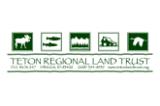All Bird Conservation by Teton Regional Land Trust
During spring in Teton Valley, stunning mountain views are accentuated by sounds of whistling curlew, drumming grouse, and winnowing snipe. In the cottonwood forests of South Fork Canyon as many as 100 bird species, including the rare yellow-billed cuckoo, are establishing breeding territories in what the U.S. Fish and Wildlife Service considers the most important wildlife habitat in Idaho. Along the Henry's Fork River, migrating white pelicans and Caspian terns rest and forage prior to moving to breeding colonies in the Greater Yellowstone Ecosystem (GYE). The mountain views for which our region is famous will likely persist, but our wild neighbors need space with water and robust vegetation to persevere.
Much of the most productive bird habitat in the GYE occurs on low-elevation private lands, and according to A Biological Conservation Assessment for the Greater Yellowstone Ecosystem (Noss et al., 2002), bird habitat is among the least protected habitat elements in the GYE. The Natural Resource Conservation Service (NRCS) classifies most of Teton Valley, Idaho as non-federal rural lands including farms, ranches, urban lands, and other private lands. Increasing residential development threatens habitat on private lands in Teton Valley, particularly wetlands. Key bird habitats along the Henry's Fork and South Fork of the Snake River are similarly vulnerable. Therefore, bird populations in the GYE are at least partially dependent on voluntary cooperation by private landowners. Through coordinated conservation planning, the Teton Regional Land Trust (TRLT) cooperates with state and federal agencies to identify land protection focus areas that maximize conservation benefits on a landscape scale within the southwest portion of the GYE.
A primary focus of TRLT's land protection effort is the prime habitat found within the riparian corridors and associated wetlands of the South Fork, Henry's Fork, and Teton River. TRLT and cooperating private landowners have protected approximately 17,000 acres in the southwest portion of the GYE with thousands more already committed to protection.
Another principal focus of TRLT's land protection efforts is farm and ranch conservation. By keeping farm and ranch families as stewards of the land, the larger community benefits culturally and economically. However, birds and other wildlife also benefit from conservation of agricultural lands. Farms in our service area that grow small grains (wheat and barley) are of particular importance to birds in the spring and fall. Waste grain left on the ground after harvest is a key food source for species such as sandhill crane, mallard, and pintail as well as Brewer's, yellow-headed, and red-winged blackbirds.
TRLT's primary tool in pursuit of all bird conservation is the conservation easement. By limiting development on key properties, birds and other wildlife receive a measure of protection.
A second tool is stewardship and monitoring. By maintaining a connection with landowners and protected lands through stewardship activities or formal biological monitoring, TRLT can better advocate practices to benefit birds and other wildlife. In some cases protected properties are the subject of extensive restoration/enhancement efforts to benefit bird species, particularly species that are a high conservation priority, such as long-billed curlew.
A third tool used by TRLT that benefits bird conservation is outreach. By educating residents within our service area about the importance of private lands to wildlife and involving them in solutions TRLT facilitates community-based conservation that benefits all birds.







